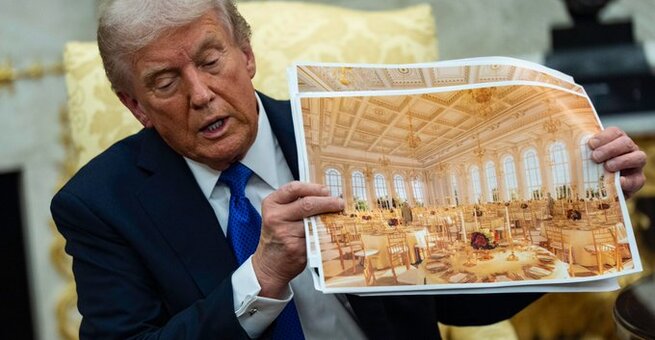Alerts

President Trump’s ballroom design might not be AI — but it’s still a mess. When Trump unveiled a scale model of the new White House ballroom, it was meant to impress. Instead, it left architects and online observers puzzled. The miniature model includes mismatched windows, misplaced columns, and even a blocked staircase — features that feel more like AI slip-ups than professional blueprints.
So why the confusion? Recent viral AI-generated images often display the same visual mistakes — extra windows, skewed staircases, and awkward symmetry. While Trump’s team insists the ballroom design is entirely human-made, critics argue that its errors highlight poor oversight or rushed planning. The similarities to AI errors only fuel public speculation about how such blunders could happen in a major White House project.
According to reports from The New York Times, the physical model and digital renderings don’t match. The west side shows 11 arched windows instead of nine. The south side has two extra columns and an added window. Even the staircase design doesn’t line up — the model shows a single staircase while renderings reveal two converging stairways. These contradictions suggest more than minor inconsistencies — they point to fundamental design confusion.
Yes — and not just for aesthetics. In 2025’s age of AI-driven skepticism, even a hint of design irregularity can undermine public trust. Critics argue that the ballroom’s flaws expose a lack of quality control and transparency. Whether AI was involved or not, the messy outcome has become a symbol of larger issues in Trump’s White House expansion plans — from rushed decision-making to questionable project management.
𝗦𝗲𝗺𝗮𝘀𝗼𝗰𝗶𝗮𝗹 𝗶𝘀 𝘄𝗵𝗲𝗿𝗲 𝗿𝗲𝗮𝗹 𝗽𝗲𝗼𝗽𝗹𝗲 𝗰𝗼𝗻𝗻𝗲𝗰𝘁, 𝗴𝗿𝗼𝘄, 𝗮𝗻𝗱 𝗯𝗲𝗹𝗼𝗻𝗴. We’re more than just a social platform — from jobs and blogs to events and daily chats, we bring people and ideas together in one simple, meaningful space.
